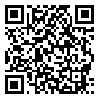BibTeX | RIS | EndNote | Medlars | ProCite | Reference Manager | RefWorks
Send citation to:
URL: http://irj.uswr.ac.ir/article-1-360-fa.html
Objectives: This study aimed to compare the combination of CIMT and BIM training with CIMT in Fine Motor Skills of Children with Hemiplegic cerebral palsy.
Methods: 24 children with hemiplegic cerebral palsy aged between 60 and 120 months participated in this RCT study. They were randomly assigned into CIMT and BIM training (n=12, four males, eight females mean age±standard deviation=93.58±14.24) and CIMT alone (n=12, six males, six females mean age±standard eviation=94.00±18.97) groups. The children in the CIMT and BIM group were received a combination of CIMT and bi-manual training in addition to current occupational therapy. Each session was started with restraint on non-involved upper extremity and practicing with the involved upper extremity for three hours. This was followed with bi-manual training for another three hours. The children in CIMT group received CIMT. Each session was started with restraint on non-involved upper extremity and practicing with the involved upper extremity for six hours. This process lasted for 10 out of 12 consecutive days for both groups. Fine motor skills, upper limb function and muscle tone were assessed using Bruininks-Oseretsky Test of Motor Proficiency, Jebsen-Taylor Test of Hand Function and Modified Ashworth Scale respectively.
Results: Fine motor skills and upper limb function of these children in CIMT and HABIT and CIMT alone groups had significantly improved (P<0.05). However, these changes were not significantly different between the two groups before and after intervention (P>0.05).
Discussion: Results showed that these two treatment approaches improved fine motor skills in the hemiplegic children with cerebral palsy. None of the interventions are better than the other one. Therefore, it is suggested to use a combination of CIMT and BIM training instead of CIMT alone in order to make the tasks more attractive and easier for the children.
دریافت: 1392/6/19 | پذیرش: 1392/7/23 | انتشار: 1392/9/10



